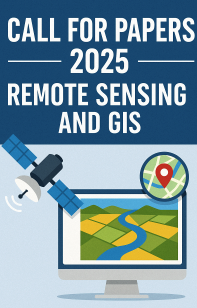Identification of Groundwater Potential Zones Using Analytical Hierarchy Process (AHP) and GIS-Remote Sensing Integration, the Case of Golina River Basin, Northern Ethiopia
Research Article- DOI: 10.23953/cloud.ijarsg.460
Abstract
Groundwater is the main source of water both for domestic and irrigation purposes in the study area, Golina basin. The Golina basin is located in the North Wollo Administration, Amhara regional state, Northern Ethiopia. The study area has a surface area of 916.77 km2 and is a semi-arid environment with an annual mean precipitation of 913 mm/year. Because of its presumed groundwater potential, the area has recently received significant attention from the regional and federal governments as well as investors. As a result, 81wells have been drilled for groundwater extraction mainly for irrigation purposes. About 182 springs and hand-dug wells have been developed for domestic purposes. However, little has been done to know the overall groundwater potential, the groundwater potential zonation and the sustainability of the current and planned groundwater extraction in the basin. Thus, the main objective of this work is to delineate groundwater potential zones of the area using an integrated method of AHP, GIS, and Remote sensing. A total of 10 thematic layers are used for the groundwater potential zone assessment. Based on the AHP method, the priority of the thematic layers with their weight are as follows: geology (0.22), geomorphologic landform (0.22), lineament density (0.17), slope (0.12), drainage density (0.09), soil (0.07), land use land cover (0.04), precipitation (0.04), normalized difference vegetation index (NDVI) (0.02) and topographic wetness index (TWI) (0.02). The groundwater potential zones of the area are computed using raster calculator in spatial analyst tool in GIS software and divided into five classes as very poor, poor, moderate, good and very good with area coverage of 93 km2 (10%), 265km2 (29%), 175 km2(19%), 221 km2(24%) and 162 km2(18%) of the total area, respectively. The result is validated using the existing spring, hand-dug wells and borehole yields. Accordingly, the high yield boreholes are drilled and concentrated in very good groundwater potential zones whereas the low yield springs are developed in the very poor. Out of 263 water points 74, 72, 48, 59 and 10 water points are located in very good, good, moderated, poor and very poor groundwater potential zones, respectively. Mainly the very good groundwater potential fall in the alluvial deposit, plain and valley landforms, very low slope (flat), high lineament density, low drainage density, coarse soil textures, and water body and cultivated lands with high precipitation, NDVI and TWI. The result of this study can be used for the planning of new groundwater-based projects and the expansion of the existing irrigation project in the basin.
doi: https://doi.org/10.23953/cloud.ijarsg.460
Downloads
Published
How to Cite
Issue
Section
License
Copyright (c) 2021 International Journal of Advanced Remote Sensing and GIS

This work is licensed under a Creative Commons Attribution 4.0 International License.



